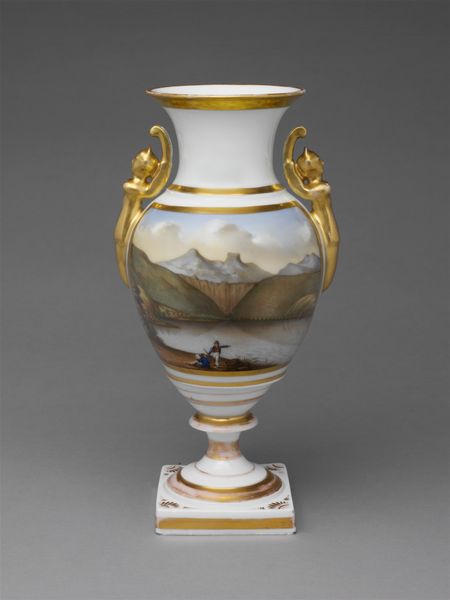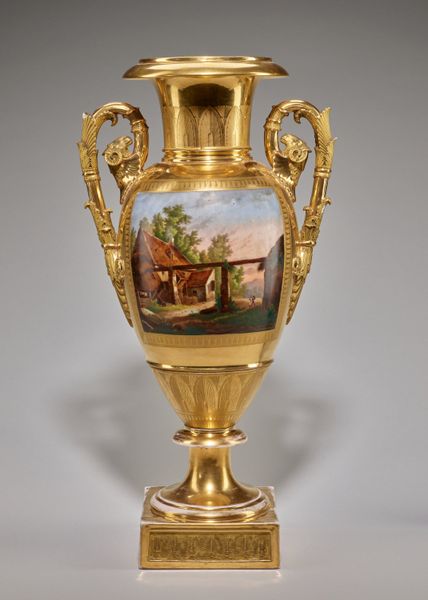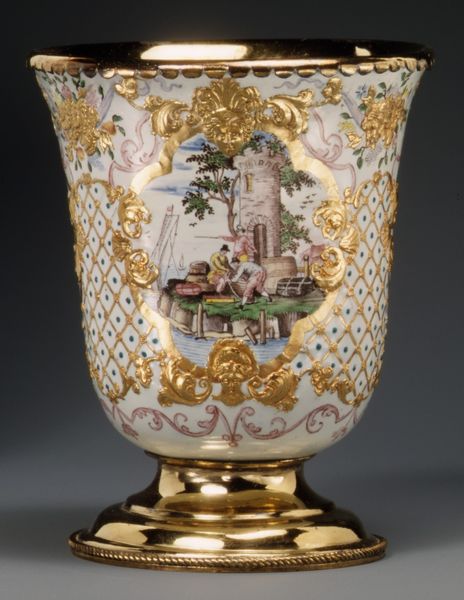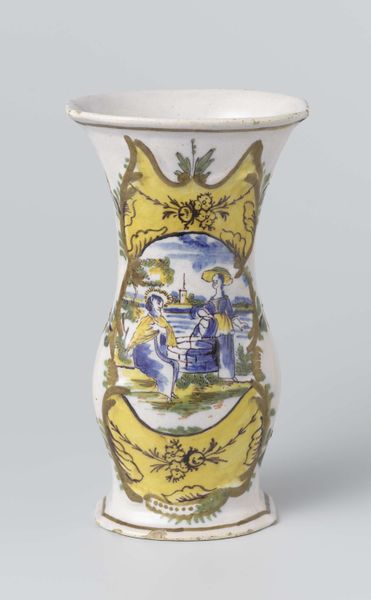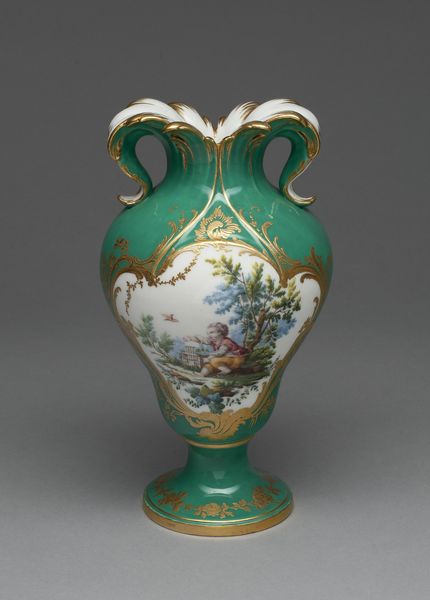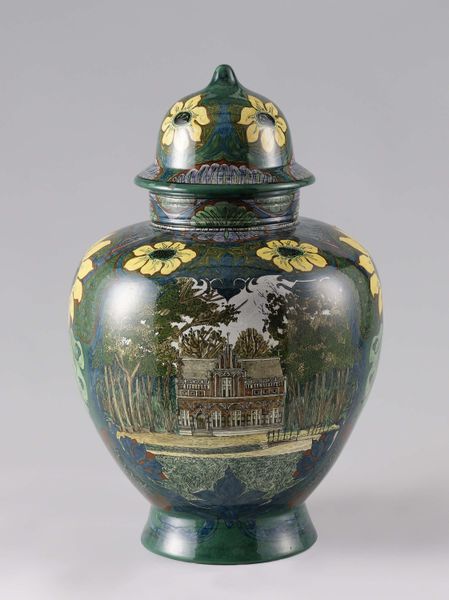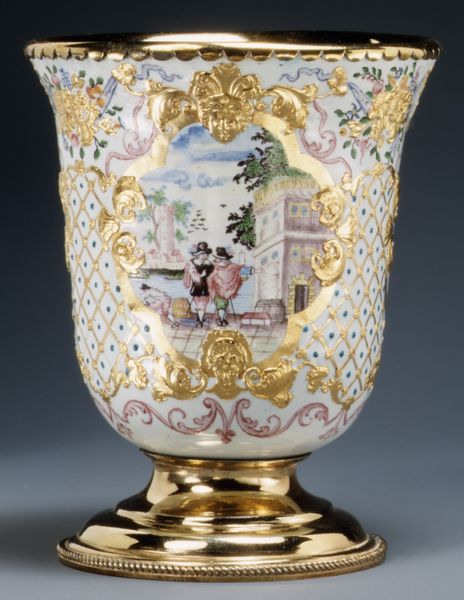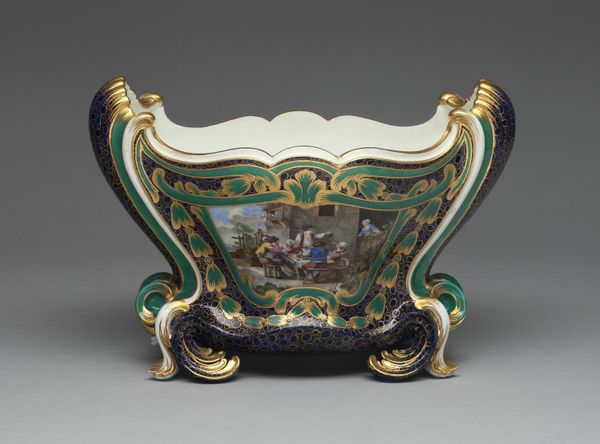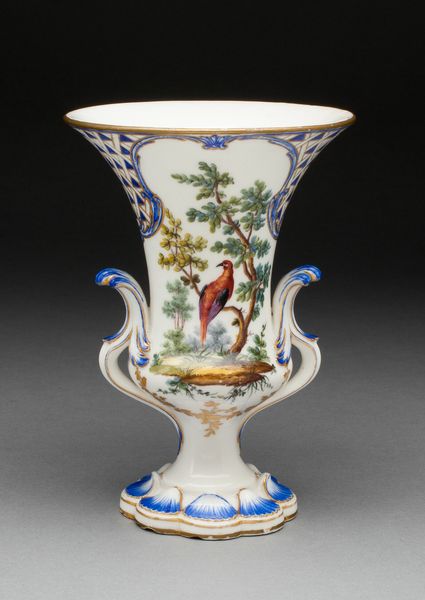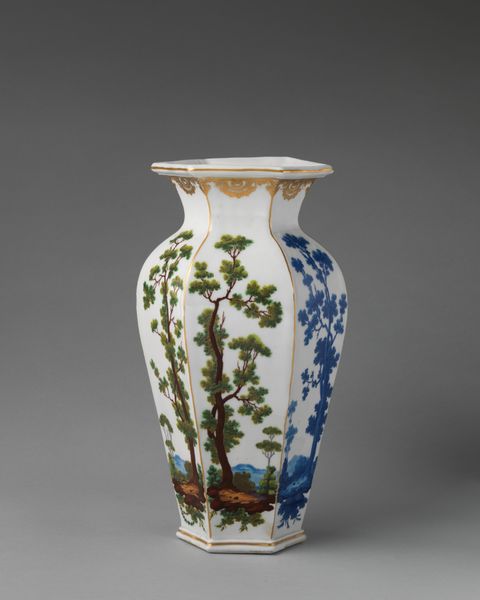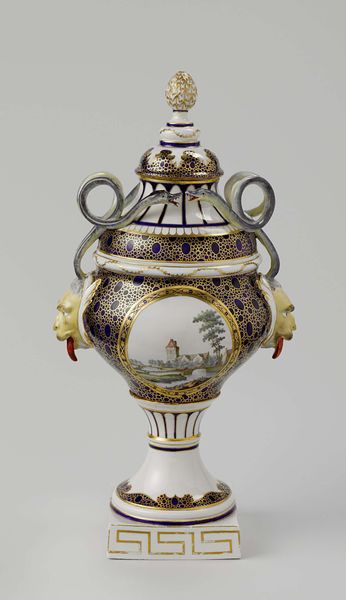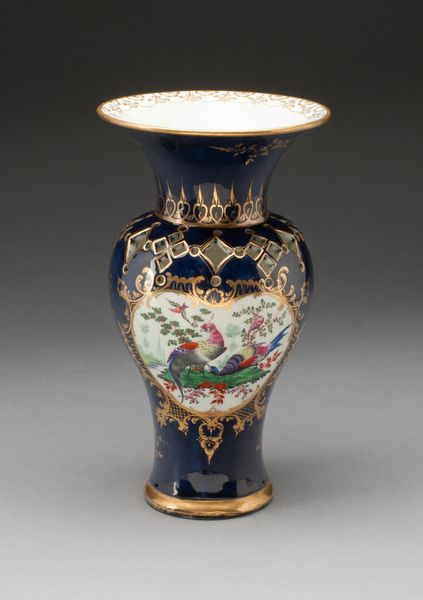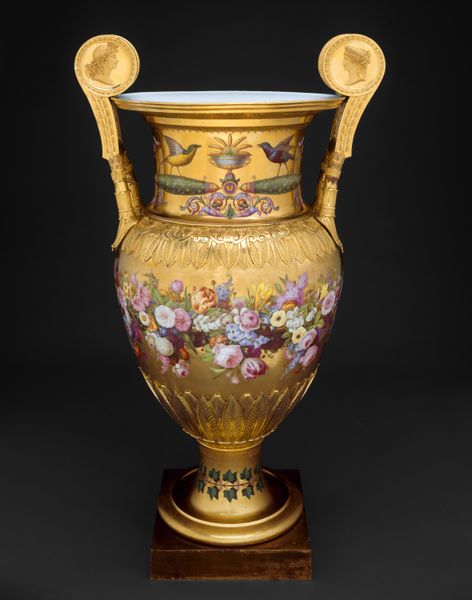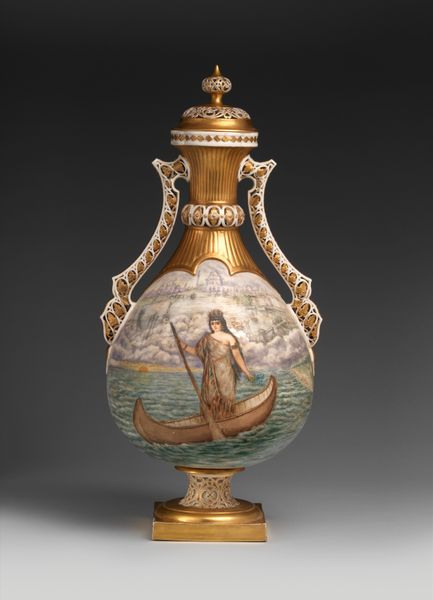
painting, ceramic
#
painting
#
landscape
#
ceramic
#
romanticism
Dimensions: H. 14 in. (35.6 cm)
Copyright: Public Domain
Editor: Here we have a "Vase," made sometime between 1828 and 1838, now residing at the Metropolitan Museum of Art. The smooth, almost cool surface of the ceramic and delicate landscape painting on it strike me immediately. What are your thoughts about this vessel, and how do you interpret its imagery? Curator: It’s a striking piece that encapsulates the Romantic era’s fascination with nature and idealized landscapes. This vase wasn't just a decorative object, it was a statement piece, designed to project a certain level of sophistication and taste, especially for wealthy households. Notice the level of detail on the painted landscape. How does this emphasis on detail relate to the emerging concept of the museum as a space for public education? Editor: That’s a great point. The detailed landscape must have evoked a sense of wanderlust, transporting the viewer, and showcasing a mastery of skill which certainly reflects access to refined artistic training. Do you think this type of work reinforced social hierarchies at the time? Curator: Absolutely. These items, often displayed prominently, signalled the owners’ cultural capital. They spoke to their knowledge of, and access to, education, travel, and refined aesthetics. This also reveals a subtle power dynamic: while beautiful, these objects served as constant reminders of societal stratification and exclusivity. Think about how institutions like the Met itself can challenge or perpetuate this historical dynamic. Editor: That's given me a whole new perspective. I initially saw beauty but now I understand its broader social implications. Curator: Precisely. Understanding the historical context is essential to unpacking the complex role art plays in shaping our world.
Comments
No comments
Be the first to comment and join the conversation on the ultimate creative platform.
